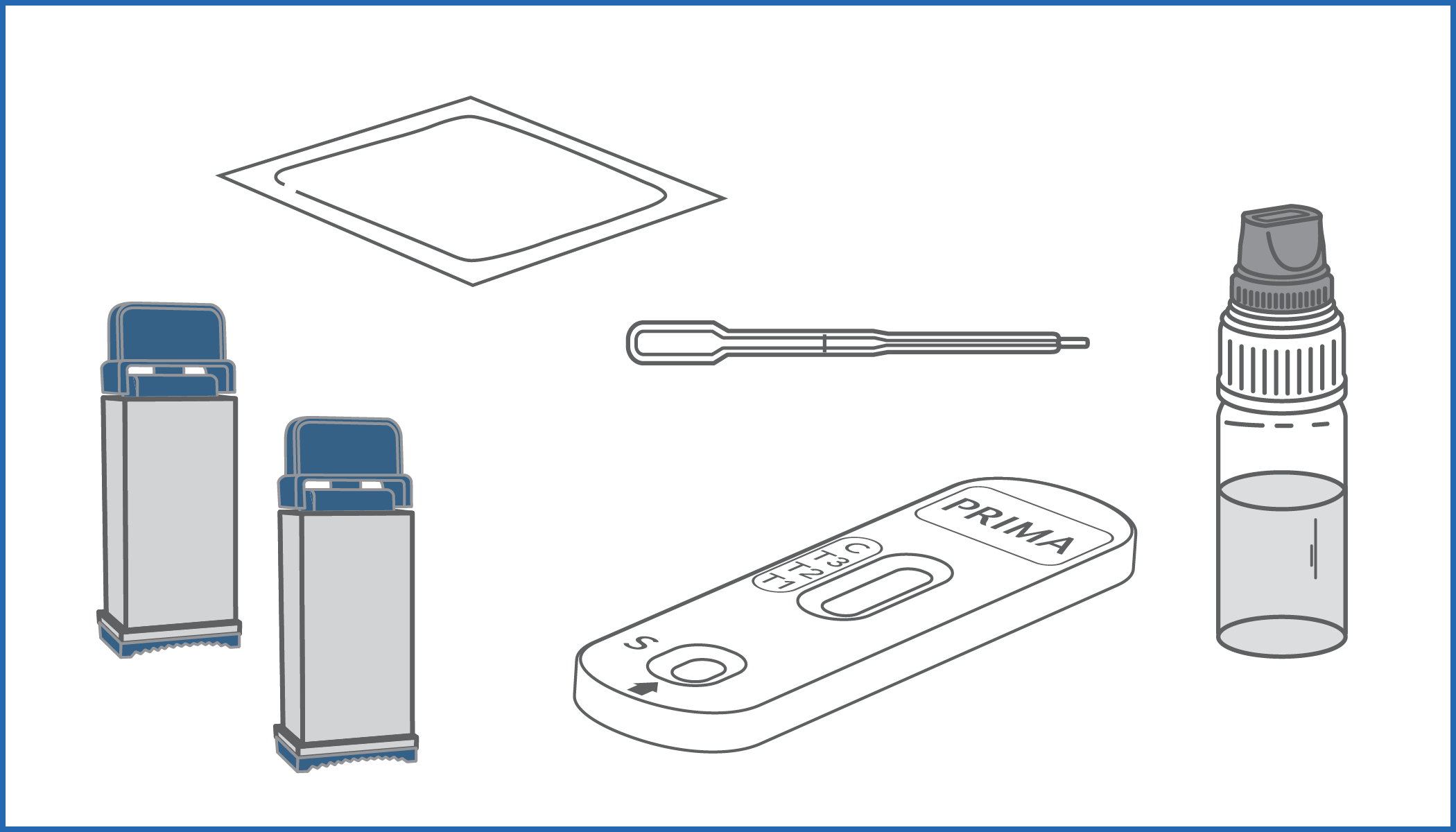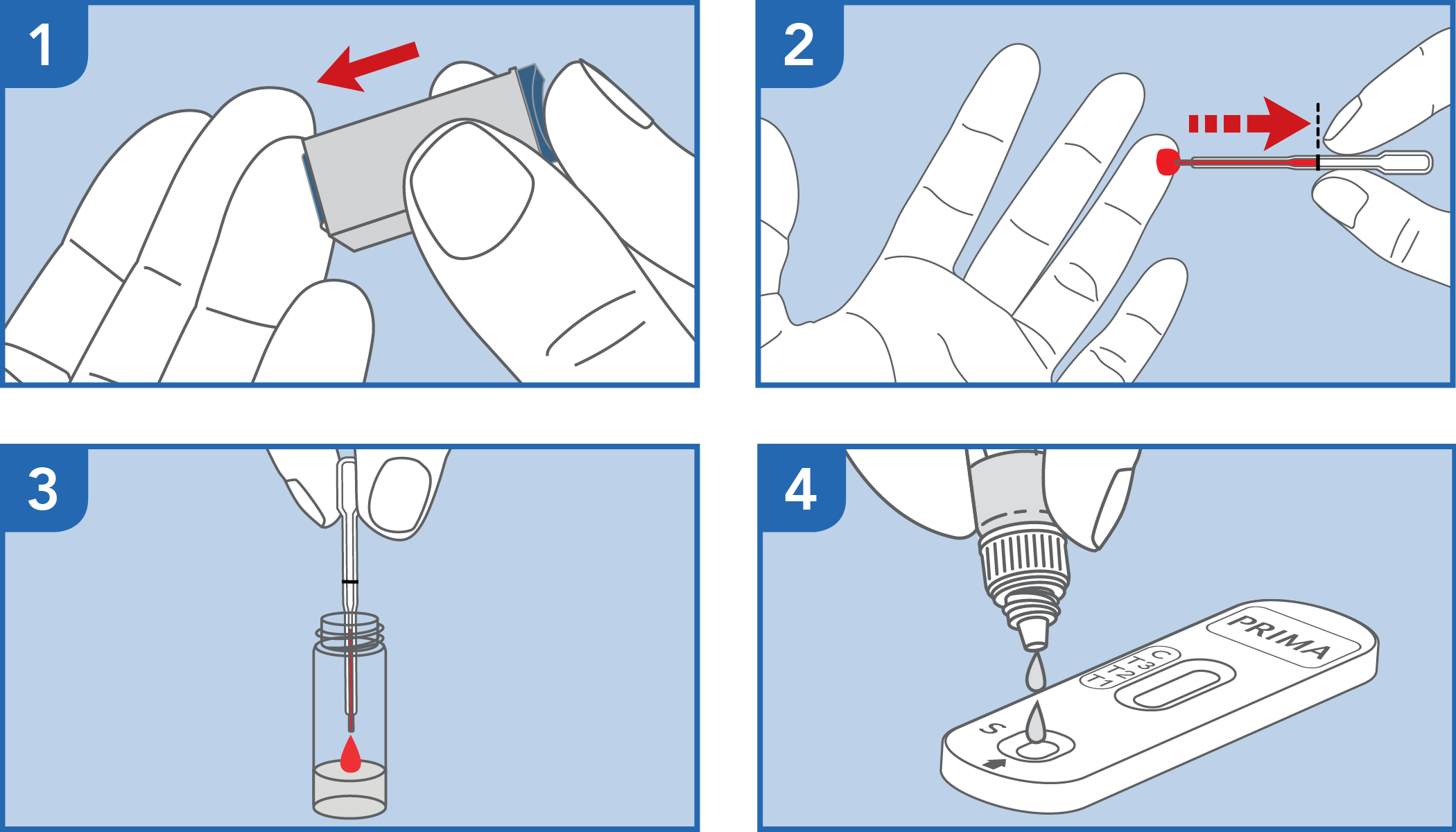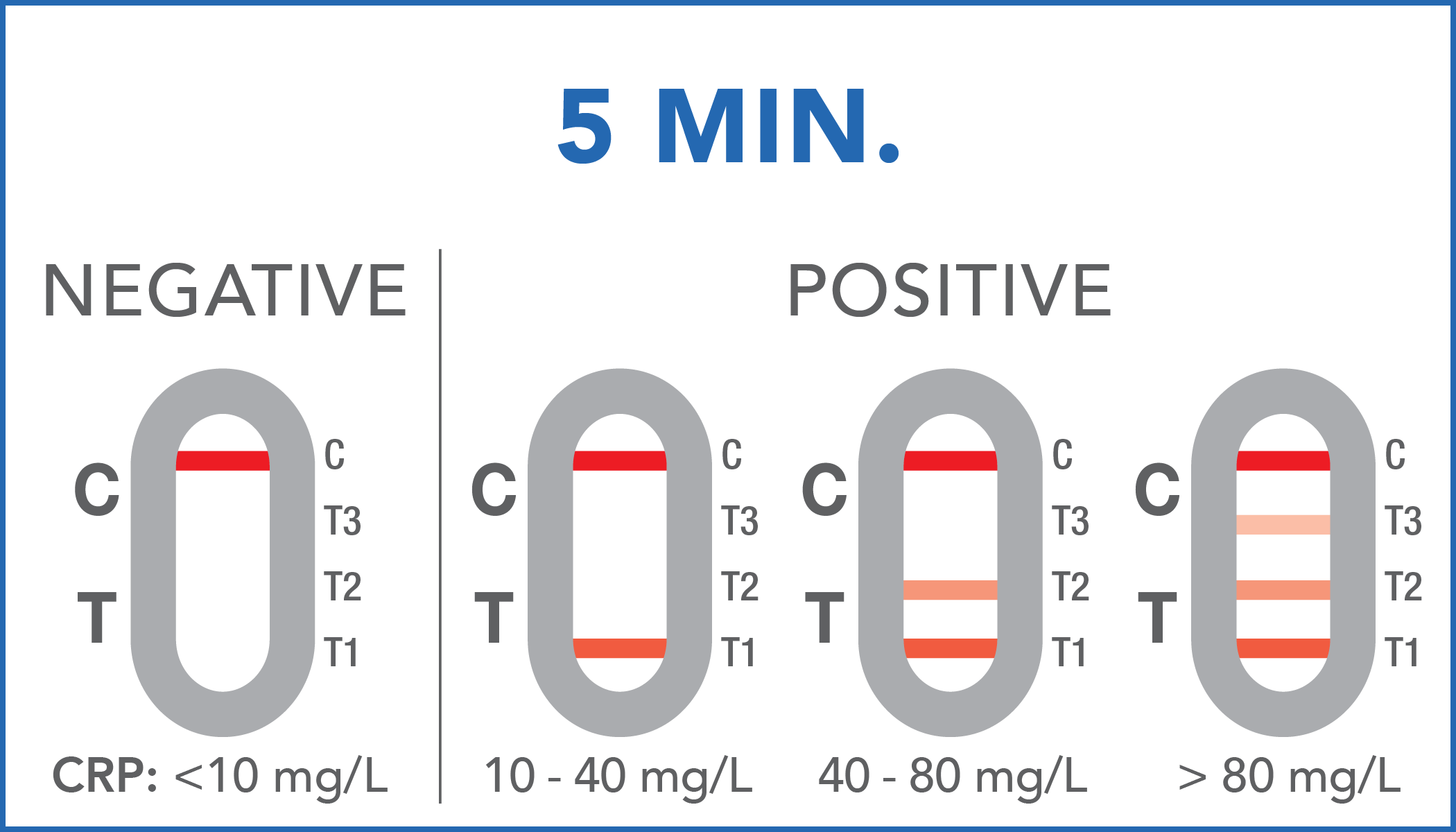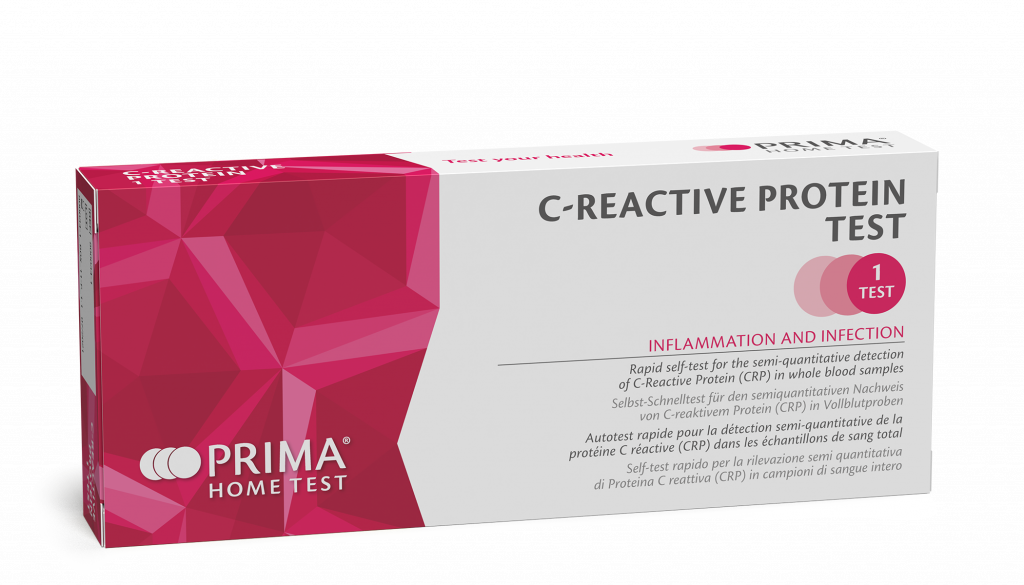



Rapid self-test for the semi-quantitative detection of C-Reactive Protein (CRP) in whole blood samples


C-Reactive Protein (CRP) is an acute phase protein produced mainly by the liver, the concentration of which increases as a consequence of injuries, infections and inflammations.
read moreAlthough it is not a specific marker for a particular pathology, it is used as a generic diagnostic indicator of infections and inflammations, as well as to monitor patients’ reactions to therapies and postoperative course. Levels of this protein in blood are high during bacterial infections, while they are restrained during viral infections. For this reason C-Reactive Protein assay can be a useful tool in defining the cause of an inflammation.
C-REACTIVE PROTEIN TEST is useful in assisting the diagnosis and therapeutic monitoring, as it helps to determine the origin of a possible infection.
read moreLevels of C-Reactive Protein in blood reach their maximum concentration between 24 and 48 hours after the onset of the first symptoms of infection / inflammation (e.g., fever, headache, fatigue), then its levels decrease as the infection subsides.
C-REACTIVE PROTEIN TEST is a rapid immunochromatographic device for the semi-quantitative detection of C-Reactive Protein in whole blood samples.
| Specificity | 96.0% |
| Sensitivity | 98.7% |
| Accuracy | 97.6% |



| Negative (<10 mg/L) | CRP concentration is less than 10 mg/L, suggesting the absence of an infection/inflammation. |
| Positive (10-40 mg/L) | these values are generally associated with an infection of viral origin or the onset of a bacterial infection. It is recommended to contact your doctor for further information. |
| Positive (40-80 mg/L) | this result may be associated with a viral or bacterial infection or physical trauma. It is recommended to contact your doctor for further information. |
| Positive (> 80 mg/L) | this result may be associated with bacterial inflammation or severe inflammation. It is recommended to contact your doctor for further information. |
1. THOMPSON, D.; MILFORD-WARD, A.; WHICHER, J. T. „The value of acute phase protein measurements in clinical practice“. Annals of clinical biochemistry, 1992, 29.2: 123-131.
2. SHAW, A. C. „Serum C-reactive protein and neopterin concentrations in patients with viral or bacterial infection“. Journal of clinical pathology, 1991, 44.7: 596-599.
3. C-reactive protein concentrations as a marker of inflammation or infection for interpreting biomarkers of micronutrient status. Vitamin and Mineral Nutrition Information System. Genf: World Health Organization; 2014 (https://www.who.int/nutrition/publications/micronutrients/indicators_c-reactive_protein/en/).
4. https://www.mayoclinic.org/tests-procedures/c-reactive-protein-test/about/pac-20385228
The test has been carried out correctly when the instructions for use are followed. It includes the reading time and the interpretation of the results shown at the "RESULTS INTERPRETATION" secrion of the instructions for use.
A colored line will appear at the control region (C) on the test device, showing that the test performed correctly. The absence of the colored line suggests to repeat the test with a new device and a new sample.
The color and intensity of the lines do not affect the interpretation of the result. The test is to be considered positive regardless of the color intensity of the test line (T).
Check product availability with the local representative in your country
